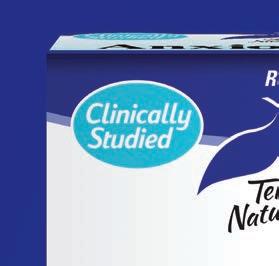
4 minute read
HERBAL ADVISOR
quiet your cough with elecampane
An exceptionally effective, easy-to-use, household remedy for respiratory complaints
Advertisement
When Helen of Troy was kidnapped, beautiful bright yellow flowers sprouted from the ground where her tears fell. Or so the story goes. Today, we know “Helen of the campaign” flower as elecampane, and is a major player in the lineup of global superstar herbs. Elecampane ( Inula helenium) is a perennial member of the daisy ( Asteraceae) family, and is native to Europe and Asia. It is especially common in the British Isles, where it serves as a popular traditional medicine. According to British herbalist David Hoffmann, it grows “where the tree falls in the forest.”
The root is thick, with a slight odor of camphor. The taste of elecampane is quite potent, being described as acrid, bitter, aromatic, and pungent, with a smell to match. Simmering elecampane root tea brings to mind a wet goat. You’ve been warned.
Better Breathing European herbalists call elecampane root their number one lung healer, and I agree. It’s a hard call, but I would put this root at the top of my global list of general lung-supportive herbs. In any condition that involves the lungs, elecampane is likely to produce some benefit. It’s not the best herb for any given action, but, as an overall respiratory remedy, it’s hard to beat. That makes it an ideal herb to use at the
Did You Know? Aromatherapists recommend elecampane essential oil for clearing lung congestion and strengthening immunity. first sign of sniffles, cough, sore throat, or sinus infection.
We can use elecampane root in just about any respiratory condition, but it specializes in cold conditions with substantial mucus and “wet asthma,” because it heats the body and dries tissues by opening the pores, releasing sweat, and thinning fluids.
This useful herb is widely employed for its expectorant and antitussive qualities, and it’s great for relieving irritating bronchial coughs, especially in children. Although it has a profound healing effect, it’s safe for kids, and is often used at the first sign of pediatric lung congestion or cough. In the 19 th century, the Eclectics made it famous for bacterial infection with heavy, thick, yellow to green mucus, and elecampane has been used historically to treat asthma, bronchitis, and chronic cough in the elderly.
The herb’s antimicrobial properties have been confirmed in scientific studies. Researchers from Ireland found that elecampane kills drug-resistant staph. And a 2019 study showed anti-inflammatory effects in the lungs Liver & Joint Support Elecampane is also respected for its action on the liver, particularly as a hepatoprotective. Recent experiments with elecampane have born this out. And research is slowly unearthing new uses. Chinese research from 2017, for instance, found benefit for rheumatoid arthritis, which fits with elecampane’s anti-inflammatory profile. The active constituents of elecampane are not well established, but are thought to be bitter terpenoids and sesquiterpenes, including the stearoptene helenin. How to Take It Elecampane root combines well with herbs with similar qualities, mullein leaf and yerba santa leaf, especially as tea. Traditionally, the roots are used in European medicine, but the flowers are
used for the same bronchial symptoms in traditional Chinese medicine.
Although this herb is considered safe, some authorities caution against its use in pregnancy, although their reasons aren’t clear. Since elecampane is a relatively mild herb, tea is your best choice as a preparation. Decoct 10–30 grams of dry, chopped root for a daily dose. As tincture, use 1 Tbs. per day.
Fast Anxiety an d Stress Relief! * †






• Groundbreaking, clinically studied product to quiet your nerves and relieve your occasional anxiety


• Contains clinically studied EP107 ™ , a unique botanical exclusive to Terry Naturally




•
family since it is safe for all ages over 4






SAFE FOR ADULTS & CHILDREN (ages 4 & up)













